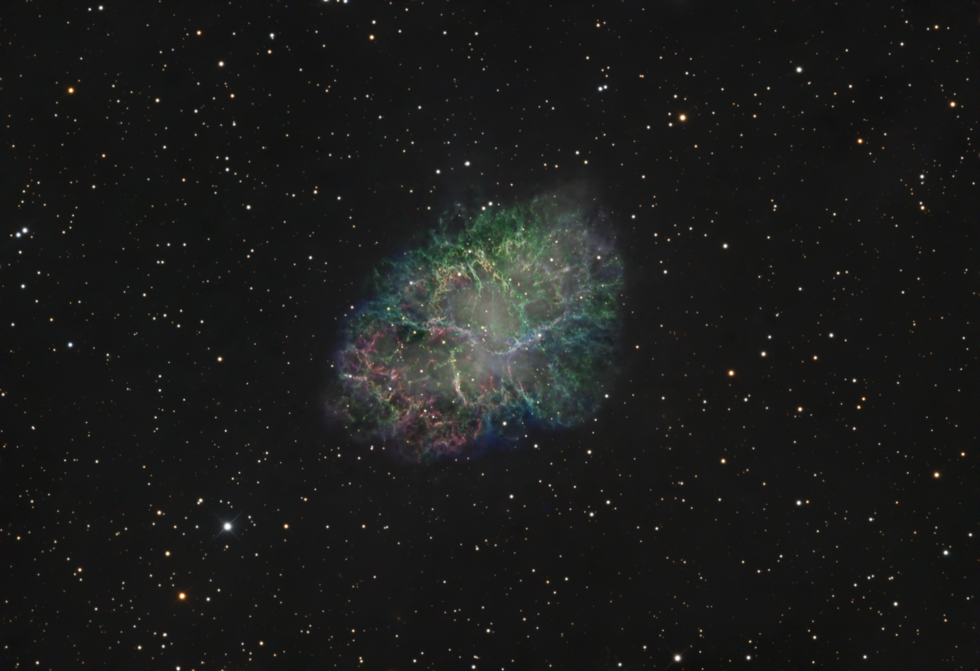M1 Crab Nebula
M1 Crab Nebula
Since its appearance in the sky as a Supernova nearly a thousand years ago the debris cloud created by particles being flung from the pulsar in its centre now extends to about 11 light years. Images taken over a relatively short period of time show just how fast expansion is occurring. This rapid expansion can best be seen in a short time lapse video created by Adam Block.
The image posted here was created using data from 3 scopes.
RGB data from CHI-1-CMOS has been used for the stars and the best 50 percent of those Red subs (27 minutes) for the Luminance.
The narrowband SHO data is a combination of SPA-2-CCD 120s subs and CHI-1-CCD 300s subs, giving approximately 2 1/2 hours integration time for each channel.
Finally a really interesting (yawn) fact. From the time the first narrowband subs in the posted image were captured until the last, the nebula probably increased in size by 8 light days!
The image posted here was created using data from 3 scopes.
RGB data from CHI-1-CMOS has been used for the stars and the best 50 percent of those Red subs (27 minutes) for the Luminance.
The narrowband SHO data is a combination of SPA-2-CCD 120s subs and CHI-1-CCD 300s subs, giving approximately 2 1/2 hours integration time for each channel.
Finally a really interesting (yawn) fact. From the time the first narrowband subs in the posted image were captured until the last, the nebula probably increased in size by 8 light days!
SPECIFICATIONS
Telescope
Planewave CDK24 + ProRC 700
Camera
QHY 600M Pro + FLI PL16803
Location
Chile and Spain
Date of observation
2020 thru 2023
Filters
HOSRGB Astrodon
Processing
PixInsight RC Astro tools and Photoshop
Credits
Telescope Live


